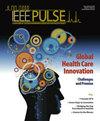Prevalence of Neisseria gonorrhoeae, Chlamydia trachomatis, Mycoplasma genitalium, and Trichomonas vaginalis among patients suspected of sexually transmitted infections in Evercare Hospital Dhaka during 2015 to 2022
IF 0.2
4区 医学
Q4 ENGINEERING, BIOMEDICAL
引用次数: 0
Abstract
Background Sexually Transmitted Infections (STIs) are often diagnosed by clinical symptoms and signs due to lack of sensitive laboratory methods. Most of the time pathogens are not identified and antibiotics are used empirically. The purpose of our study is to find out the STI pathogens detected by sensitive multiplex PCR done routinely in a tertiary care hospital. Materials and methods A total of 578 samples were tested from February 2015 to July 2022. Urine, prostatic secretion, urethral swab, high vaginal swab, semen, throat swabs were collected from symptomatic patients for the routine test. DNA was extracted and Neisseria gonorrhoeae, Chlamydia trachomatis, Mycoplasma genitalium, Trichomonas vaginalis were screened by using CE-IVD approved multiplex Real Time PCR kit. Result Out of 578 cases, 76 (13.15%) were positive for at least one pathogen and 5 were co-infections. Out of 76 positive cases, Chlamydia trachomatis was found 41 (53.9%), Neisseria gonorrhoeae was 13 (17.1%), Mycoplasma genitalium was 12 (15.8%), and Trichomonas vaginalis 5 (6.6%) and co-infections with Neisseria gonorrhoeae and Chlamydia trachomatis was 5 (6.6%). Positivity rate was remarkably higher in male (77.6%) than female (22.4%) and predominant age group was 19-40 years. Conclusion The predominant STIs pathogen found in our cohort is Chlamydia trachomatis followed by Neisseria gonorrhoeae. Multiplex PCR is a wide-ranging diagnostic method for the detection of multiple pathogens simultaneously which allows early and accurate diagnosis of STIs. Pulse Volume 12-14 2020-2022 p.34-392015 - 2022年达卡Evercare医院疑似性传播感染患者淋病奈瑟菌、沙眼衣原体、生殖支原体和阴道毛滴虫的患病率
由于缺乏敏感的实验室方法,性传播感染(STIs)往往通过临床症状和体征进行诊断。大多数情况下,病原体无法识别,抗生素只能凭经验使用。本研究的目的是了解某三级医院常规多重PCR检测STI病原菌的情况。材料与方法2015年2月至2022年7月共检测样品578份。采集有症状患者的尿液、前列腺分泌物、尿道拭子、阴道高位拭子、精液、咽拭子进行常规检查。提取DNA,采用CE-IVD批准的多重实时荧光定量PCR试剂盒对淋病奈瑟菌、沙眼衣原体、生殖道支原体、阴道毛滴虫进行筛选。结果578例患者中,至少有一种病原菌阳性76例(13.15%),合并感染5例。76例阳性病例中,沙眼衣原体41例(53.9%),淋病奈瑟菌13例(17.1%),生殖道支原体12例(15.8%),阴道毛滴虫5例(6.6%),淋病奈瑟菌与沙眼衣原体共感染5例(6.6%)。男性阳性率(77.6%)明显高于女性(22.4%),主要年龄为19 ~ 40岁。结论以沙眼衣原体为主,其次为淋病奈瑟菌。多重PCR是一种广泛的诊断方法,可同时检测多种病原体,从而实现对性传播感染的早期和准确诊断。脉冲体积12-14 2020-2022 p.34-39
本文章由计算机程序翻译,如有差异,请以英文原文为准。
求助全文
约1分钟内获得全文
求助全文
来源期刊

IEEE Pulse
ENGINEERING, BIOMEDICAL-
CiteScore
1.10
自引率
0.00%
发文量
88
审稿时长
6-12 weeks
期刊介绍:
IEEE Pulse covers both general and technical articles on current technologies and methods used in biomedical and clinical engineering; societal implications of medical technologies; current news items; book reviews; patent descriptions; and correspondence. Special interest departments, students, law, clinical engineering, ethics, new products, society news, historical features and government.
 求助内容:
求助内容: 应助结果提醒方式:
应助结果提醒方式:


